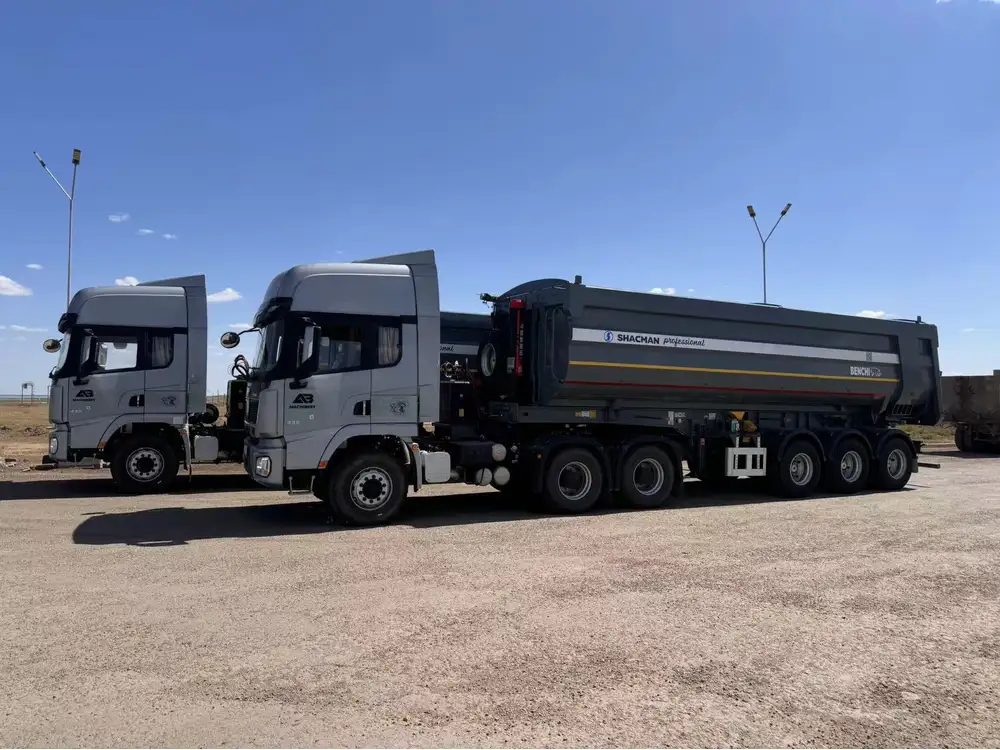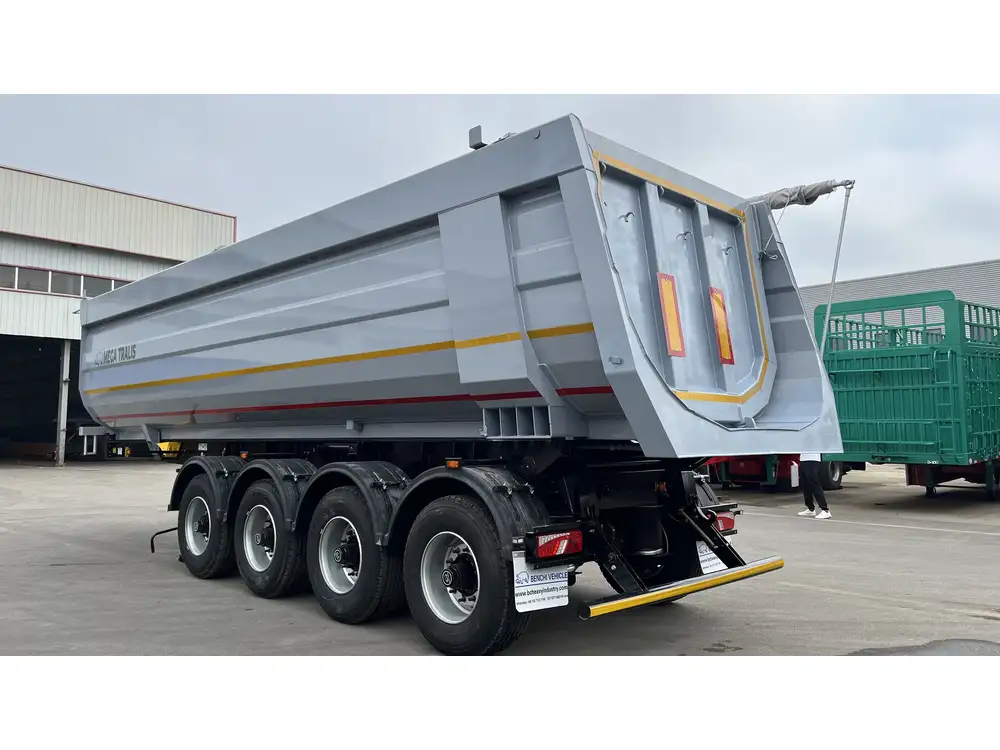When navigating the complex world of semi-trailers, the term “shank” often surfaces, sparking a myriad of questions among industry professionals and enthusiasts alike. This article intends to dissect the concept of shanks, their types, functions, and implications for semi-trailer performance. By providing a comprehensive overview with high levels of detail, we aim to address user intent effectively and enhance your knowledge on this crucial component.
What is a Shank?
The shank in a semi-trailer primarily refers to a component that connects the trailer’s body to the towing vehicle. While many might visualize it merely as an attachment point, the shank plays a pivotal role in the overall stability and functionality of the trailer, ensuring that cargo is transported safely and efficiently.
Key Characteristics of Shanks
| Characteristic | Description |
|---|---|
| Material | Commonly made of high-strength steel to withstand load stress. |
| Design | Often features a tapered or straight profile, depending on the application. |
| Load Capacity | Varies based on construction and application, affecting the overall weight the trailer can manage. |
| Length | Available in various lengths to accommodate different hitch types. |
| Compatibility | Designed to work with specific trailer sizes and towing vehicles. |

Types of Shanks
Understanding the different types of shanks is essential for selecting the right one for your semi-trailer. Each type serves various purposes based on vehicle configurations and load requirements.
1. Fixed Shank
A fixed shank is a permanent fixture on the trailer, ensuring consistent attachment to the towing vehicle.
Advantages:
- Increased stability due to fixed geometry.
- Suitable for heavy-duty trailers with significant payloads.
Disadvantages:
- Limited adjustment capabilities for load distribution changes.
2. Adjustable Shank
Adjustable shanks provide versatility, allowing the operator to modify the height of the connection.
Advantages:
- Facilitates easy coupling with various towing vehicles.
- Ideal for differing load heights.
Disadvantages:
- May wear out faster if frequently adjusted.

3. Drop Shank
A drop shank is designed to lower the attachment point, accommodating higher trailers or achieving optimal air clearance.
Advantages:
- Reduces the risk of trailer sway by lowering the center of gravity.
- Enhances towing stability, especially on uneven terrain.
Disadvantages:
- May limit the maximum weight load due to altered geometry.
Functions of a Shank in a Semi-Trailer
The shank’s significance extends beyond merely connecting the trailer to the towing vehicle. Its contributions can be observed in various aspects of trailer operation.
Stability and Load Distribution
One of the primary functions of the shank is to promote stability during transport. A well-designed shank helps balance the weight across the axle, minimizing the risk of swaying or tipping during transit. This balance is crucial, especially when navigating sharp turns or uneven surfaces.

Safety Features
The shank acts as a safeguard against sudden detachment, which can have catastrophic implications during transport. Many shanks are engineered with safety features, such as:
- Safety chains: Providing backup support between the trailer and towing vehicle.
- D-ring mounts: Allowing secure hook-ups for additional safety equipment.
Enhanced Aerodynamics
The design of a shank can also influence the aerodynamics of the trailer. A more streamlined connection reduces drag, which can subsequently improve fuel efficiency during long hauls.
Selecting the Right Shank for Your Semi-Trailer
Choosing the appropriate shank requires a thorough understanding of your trailer’s specifications and the towing vehicle’s capabilities. Several considerations should guide your decision-making process:

Load Capacity Requirements
First and foremost, assess the load capacity of your semi-trailer. The shank must be able to handle both the weight of the trailer and its cargo. Check the manufacturer’s guidelines and ensure that the shank is rated for your specific requirements.
Compatibility with Hitch Types
Different vehicles come equipped with various hitch types, ranging from standard receiver hitches to fifth wheels. Ensure the shank you choose is designed to connect seamlessly with your vehicle’s hitch.
Terrain Conditions
If you frequently navigate rugged terrain, an adjustable or drop shank might be necessary to adapt to variables like incline and load shifts during transit. This adaptability can mitigate risks when encountering challenging driving conditions.
| Factor | Consideration |
|---|---|
| Load Type | Assess whether the load is evenly distributed or prone to shifting. |
| Hitch Compatibility | Check compatibility with vehicle hitch type: bumper pull, fifth wheel, etc. |
| Operational Conditions | Determine the common roads and environments: city, highway, or rough terrain. |

Common Questions About Shanks
How Does a Shank Affect Towing Performance?
The inherent design and function of the shank directly impact towing performance. An improperly sized or incompatible shank can lead to instability, increased wear on components, and potential accidents. Ensuring that the shank fits the specific needs of the trailer and vehicle setup is crucial for optimal performance.
What Is the Average Lifespan of a Shank?
The lifespan of a shank largely depends on its material, usage frequency, and exposure to environmental elements. Generally, a well-maintained shank can last several years, but regular inspection for wear and damage is advisable. Signs of wear include rust, bent structures, or cracks, which necessitate immediate replacement.

Can I Upgrade My Shank?
Yes, upgrading your shank is beneficial, especially if you frequently transport heavier loads or have changed towing vehicles. Various aftermarket options exist, including those that provide enhanced features or increased load capacities.
Maintenance Tips for Shanks
Proper maintenance of your semi-trailer shank can extend its lifespan and ensure safe operation.
Regular Inspections
Perform routine checks for signs of wear, such as rust or physical damage. Pay special attention to mounting points, as this is where most stress occurs.

Lubrication
Applying lubricant to any moving parts connected to the shank can reduce friction and prolong its functionality. Ensure that grease points are adequately serviced, particularly after long trips involving challenging conditions.
Proper Storage
If the trailer is not in regular use, store it in a dry, sheltered location to minimize exposure to potentially corrosive elements.
Conclusion
Understanding the complexity of shanks in semi-trailers enriches your grasp of trailer operations and enhances your ability to make informed decisions regarding your equipment. The shank is not simply a connector; it’s a fundamental component that affects stability, safety, and performance when transporting goods.
By equipping yourself with the knowledge of shank types, functions, and the nuances of selection and maintenance, you can significantly improve your semi-trailer setup, ensuring safer, more efficient transportation. Make informed choices, prioritize regular inspections, and consider future upgrades as you elevate your semi-trailer experience. As the market evolves, staying informed and adaptable is paramount to maintaining operational excellence.
This comprehensive guide covering all facets of shanks in semi-trailers serves not only as a resource but as a foundation for building operational expertise within the industry. With attention to detail and clarity, we aim to provide you with the tools necessary for successful and safe transportation.



